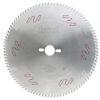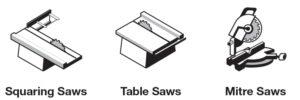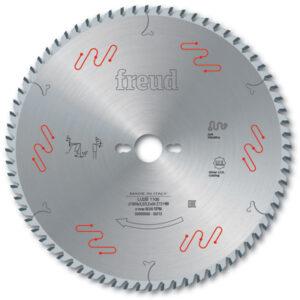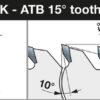Description
Kitasaw Crosscut Saw Blade
A. Rip & Crosscut Saw Blades (Small Number Of Teeth)
For exp : 10″ blades with 24-30 teeth and 12″ blades with 40 or fewer teeth
| Application | : For Optimal Quality Ripping and Crosscutting |
| Machine | : Table and Special Saws, Portable Machines |
| Material | : Soft and Hardwood; Wood-based Panels |
B. Crosscut Saw Blades (Medium Number Of Teeth)
For exp : 10″ blades with 50 teeth and 12″ blades with 60 teeth
| Application | : For Optimal Quality Ripping and Crosscutting |
| Machine | : Table and Sizing Saws, Portable Machines |
| Material | : Soft and Hardwood; Wood-based Panels |
C. Finishing Crosscut Saw Blades (High Number Of Teeth)
For exp : 10″ blades with 60 teeth and 12″ blades with 80 teeth or more teeth
| Application | : For Optimal Quality Ripping and Crosscutting |
| Machine | : Table and Special Saws, Portable Machines |
| Material | : Soft and Hardwood; Wood-based Panels |
Teeth Types :
 |
ATB (Alternate Top Bevel)
– Typical for cross-grain. Also used on ripping blades. |
WZ |
 |
ATBR (Alternate top Bevel with Raker)
– The flat-top raker sits lower, adds stability during cut and helps clean out and eject chips. – It usually has a repeating pattern of 5 teeth. The first 4 teeth are ATB style, and the 5th tooth is a flat-top raker. The flat top raker tooth leaves behind a flat surface after it cuts. It has a large gullet between each 5 tooth sequence to remove sawdust efficiently. The ATBR is optimized for crosscuts. It leaves a clean finished cut on hard and soft woods. It also works decently on rip cuts, so think of it as a good all-around general purpose tooth design. |
WZF |
 |
WZWZF |
























